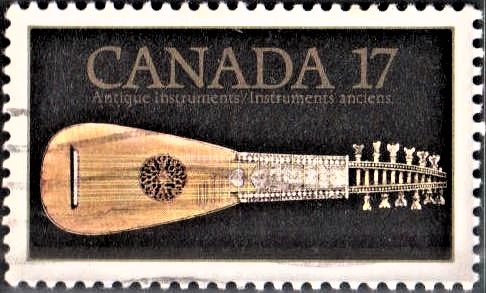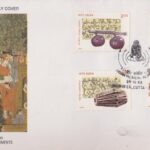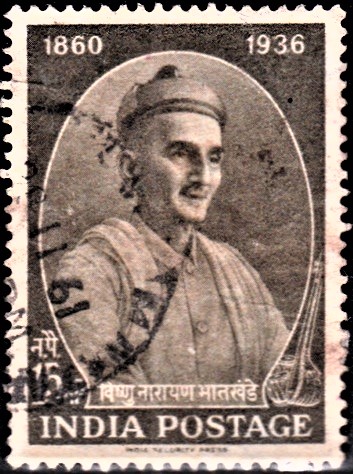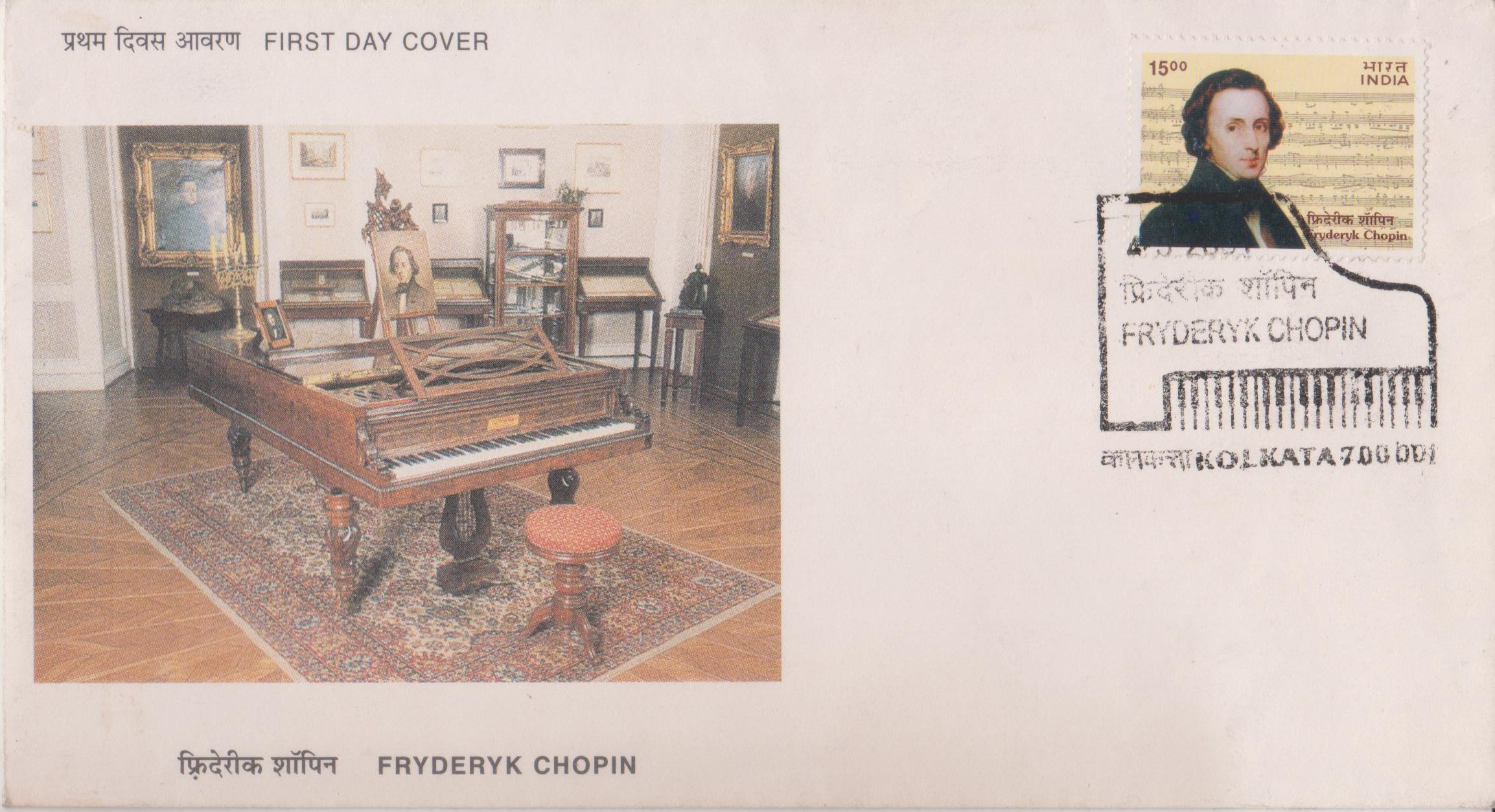
Canada on Music – Antique Instrument Mandora
A commemorative postage stamp on the Rare Musical Instrument Exhibition “The Look of Music”, Vancouver :
 Issued by Canada
Issued by Canada
Issued on Jan 19, 1981
Design : The antique instruments stamp was designed by Clive Webster of Toronto. The typography was prepared by William Tibbles, also of Toronto. The stringed instrument depicted on the stamp is an eighteenth-century mandora, which was a predecessor of the mandolin and is from the collection of The Royal Ontario Museum.
Type : Stamp, Postal Used
Colour : Multi Colour
Denomination : 17 Cents
About :
- From 2 November 1980 to 5 April 1981, the Vancouver Centennial Museum is presenting “The Look of Music”, a major exhibition of rare musical instruments dating from 1500 to 1900. It is the biggest exhibition of historic musical instruments that has ever taken place. Over 75 percent of the instruments have never before left their home museums. The Vancouver Centennial Museum is displaying more than 300 instruments, including a violin made in Cremona, Italy, by Antonio Stradivari; the world’s first clarinet; four saxophones made by Adolphe Sax, the instrument’s inventor; and a piano made by Bartolommeo Cristofori who invented the instrument. The exhibition also boasts three shawms, three racketts, a serpent, a heckelphone, two fagottinis, two flageolets, a flugelhorn, two ophicleides, three bastarda and pomposa, a virginal, and many more. Museum visitors can view these treasures, listen to concerts or lectures, or watch Canadian craftsmen building replicas of some of the instruments on display.
- The history of music and musical instruments stretches thousands – perhaps hundreds of thousands – of years into the past. It has been suggested that chanting was already 500,000 years old when speech began approximately 80,000 years ago. Authorities speculate that primitive people produced rhythmic sounds by stamping the ground or slapping their own bodies. Excavations in Siberia unearthed perhaps the oldest surviving instruments – a primitive bone drum and two small bone flutes played 35,000 years ago. The rattle is also among the most ancient of surviving instruments. Many of these ancient instruments were no doubt associated with dancing.
- The making of European musical instruments in Canada began as early as the eighteenth century. There is evidence that an organ was built in Canada in 1723. The incentives to build instruments in Canada were strong. The market was growing; imported instruments made of European woods often reacted unfavourably to the Canadian climate; and the high shipping costs did not guarantee that an instrument world survive an ocean voyage. As a result, organ and piano building soon began to flourish in Canada. For example, Joseph Casavant, the first native Canadian organ builder, was born in 1807. His two sons formed a company that still bears his name. The first Canadian piano was built in the second decade of the nineteenth century. By 1900 there was a thriving industry doing a good export business. It is thus fitting that a piano made by Heintzman, the famous Canadian company, will appear at the exhibition.
Subscribe
Login
0 Comments
Oldest







